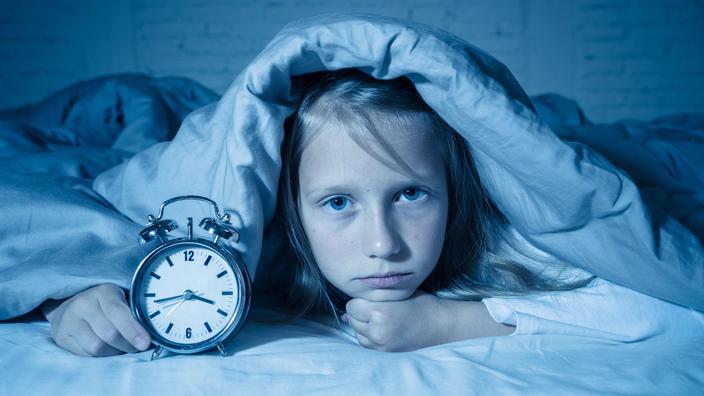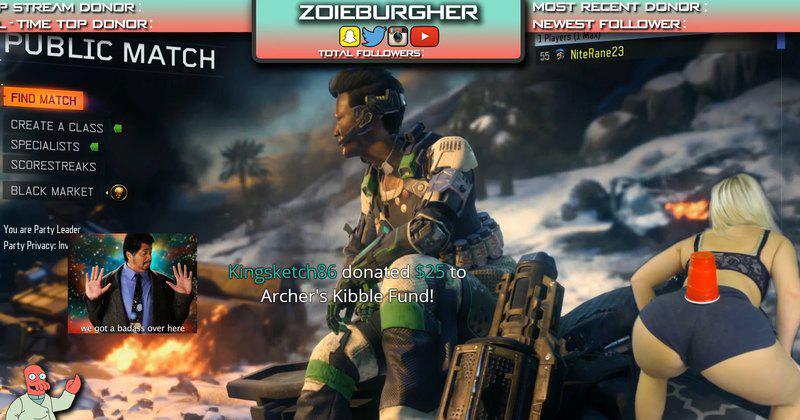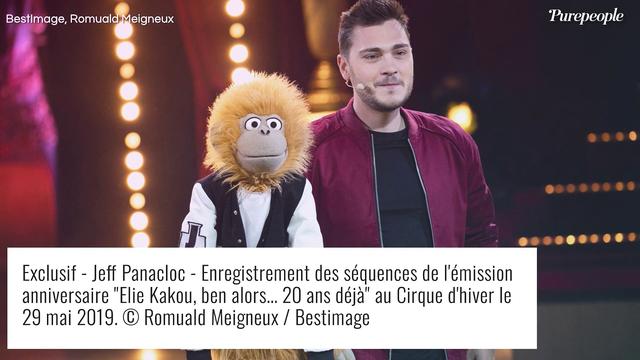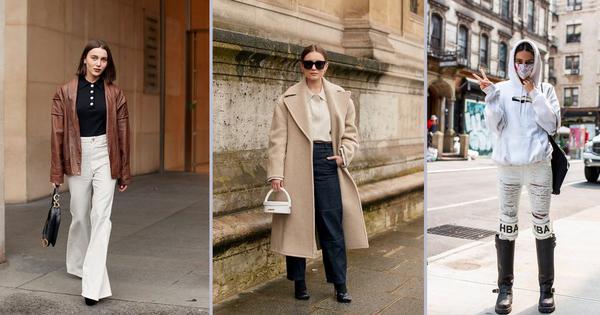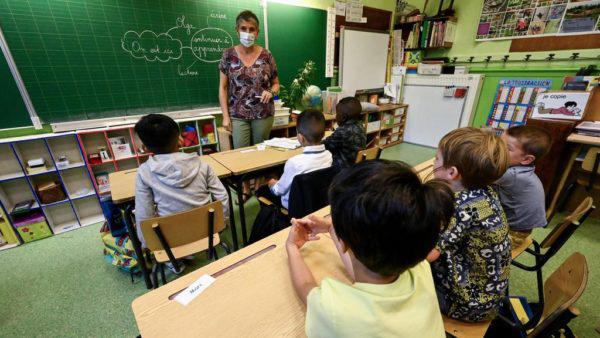
HomeEDITO
Published on
by Konbini
Artist Léah Schrager explains her journey to becoming an Instagram model. For her, Instagram modeling would be a new form of digital do it yourself service. Léah studied the techniques and aesthetic codes of the platform for a year. In this testimonial, she reveals the recipes.
At the beginning of 2015, towards the end of my master's degree in fine arts at the Parsons school in New York, I conceived an artistic project consisting in manufacturing entirely via the Internet a celebrity destined to be known by 2020. The celebrity that I started creating was called Ona: a hyper-sexy, cyber-gifted woman, a real rock star.
The beginning of my transformation into an Instagram model
Without any budget or any relationship in the industry, I knew that social networks were going to play a very important role. I started by using some of the same tactics that I had used in the past for other projects: a press release, an article on the Thought Catalog site, requests for articles from journalists. But it didn't do much.
It was then that I tried another approach, using what I already had at my disposal: two Instagram accounts, each followed by a few hundred people, one dedicated to my practice artistic in general (@leahschrager) and the other dedicated to selfies and modeling (@onaartist). It was clear that the selfies I posted on the latter account were getting more likes and this page was growing faster.
So I searched Instagram pages of models with large followings and asked them, via direct messages, if they would be willing to get paid to talk to me about their account development. I had no response. I ended up writing a direct message to a collection page — that is, a page with a large number of followers that posts photos of different models — who replied to me. The page was @the.buttblog, and I was told it would cost me $200 for a permanent post. I paid to post a photo of myself, and within 24 hours my account had gained around 5,000 followers. This marked the beginning of my transformation into an Instagram model.
Instagram, an important player in the world of modeling
Instagram has emerged as an important player in the modeling world, bringing together different typologies of models on its platform. Models create Instagram pages to showcase their work, increase their following, and gain cultural and economic power. While many models from the fashion world or agencies have well-stocked Instagram accounts (for example: @angelcandices), Instagram models deviate from this model because, for their part, they build their own reputation on this platform without the support of the fashion industry.
For over a year, I immersed myself in the world and economy of Instagram models. By taking a very close look at other female users and applying their approaches to my own account, I realized that becoming an Instagram model involved engaging in a specific set of practices. By adopting these practices, I managed to grow my own Instagram model profile and amass over 380,000 genuine followers.
By promoting a paid site on my Instagram page where I put "all photos censored by Instagram", I managed to generate enough income to fully reimburse the creation of Instagram content. I've come to see Instagram modeling as a new form of independent, digital, and feminized work and performance.
The mainstream media prefers agency models and celebrities to Instagram models. Agency models are approved by the system, they are frequently photographed by famous fashion photographers. Having been molded by this male hand, they do not need to create their own identity. They are therefore seen as more respectable figures than Instagram models.
The Instagram model is actually more into entrepreneurship, she controls her image. She takes care of her artistic practice, her start-up, the marketing of her own brand, by amalgamating on her "Instagram art" page and commerce. In this way, she manages to monetize her work which consists of playing with the expectations of her fans, mainly male.
But what is an Instagram model?
The work and performance of an Instagram model differentiates her from ordinary users of the social network. Any user can upload pictures of herself in a bikini, but if her account is used primarily for the purpose of socializing and you are not working to increase the differential between people followed and people who follow you, then one cannot be called an Instagram model.
The Instagram model is not on this platform to chat with her friends. She is looking for something else: to make a name for herself, to earn her living, to find fame or money, to be seen, to open up her perspectives and to spread her presence.
You have to distinguish between pages of celebrities and those of Instagram models. For example, a celebrity will post a beach photo or an image where she is wearing an outfit signed by a great designer. On the other hand, an Instagram model will more often post a photo of her cleavage or show herself in a little outfit, because that's what her fans want to see: her body.
An example of this difference between models in the fashion world and Instagram models can be noted by comparing two accounts: that of @emrata, model under contract with a famous agency with 7.1 million subscribers, and that of @saraunderwood, an Instagram model with 4.4 million followers.
The two have some similarities and have even worked together. In 2013, they did an ad for the fast-food chain Carl's Jr. @emrata has participated in numerous high fashion campaigns and starred in films. @saraunderwood is known first for her Instagram account, then for being featured as Playmate of the Month and Year on the pages of Playboy magazine.
Their use of Instagram illustrates the difference between the profiles of agency models and that of Instagram models. While both enjoy comparable follower counts, a closer look at their pages reveals that @saraunderwood poses in a bikini in all of the photos she posts while @emrata only appears in a bikini in a third of her photos, the rest being photos of her in designer clothes or family photos, etc.
If @saraunderwood posts a photo that she doesn't appear in, it's probably an ad she was paid for.
This shows us that most of @emrata's income does not come directly from Instagram, but rather from her modeling and acting activities. While she does post brand-sponsored posts on her Instagram page, these are rare and linked to high-profile brands (like @tiffanyandco). These sponsored posts are reported by a hashtag and they stem from her modeling activity, celebrity events or contracts she obtains through her agency.
For her part, @saraunderwood seems to earn most of her income by acting as an ambassador for brands, or by promoting these brands on her Instagram profile. In recent posts where she documents her "road trip through the Northwestern United States", @saraunderwood actively promotes different brands like @yandy, @trendy_butler, @supeapp.
Unlike @emrata, most of her income comes from her large following on Instagram. These revenues go to her in full since she has no agency.
Their respective status in the modeling world is probably determined by their different body types. @emrata has the typical figure of a model: she is tall and thin, her chest is both imposing and natural. @saraunderwood, on the other hand, doesn't have a standard model physique: she's shorter and plumper. She also admitted to wearing breast implants.
The practices of Instagram models become even more exciting in view of their differences with those of models from the world of fashion. It's better to be seen on the right collection page than to be photographed at the right party with the right people. It is better to have the forms of Instagram than the thinness of the catwalks. Rather than wearing a fancy designer dress, it's probably better to wear nothing at all. In this sense, Instagram models are the putassier counterpoints of installed models.

The Instagram model, unlike the catwalk professional, makes a point of being as explicit as possible while remaining within the framework of the rules of conduct imposed by Instagram. It's very rare, for example, to see an Instagram model champion the #freethenipple initiative, because nipple censorship is part of what gives the Instagram model some of her power: how sexy can she be without showing herself naked? ? Technically, it's what allows his work to escape the labels of "erotic" or "pornographic" photography, which is a good thing, since those categories are usually foils for brands that sell mainstream products.
Instagram offers a platform for women who want to make a living through modeling or performance. The social network allows them to prosper despite a morphology that does not conform to haute couture criteria. There are also enough models working on Instagram without any support from the fashion industry to see this as a new form of modeling specific to this platform.
But what exactly does an Instagram model do?
The most visible aspect of the Instagram model's work is the post. As said before, she publishes exclusively (or almost) suggestive photos of herself.
But her job as an Instagram model isn't all about posting. It is also necessary to take care of users and their feedback (do moderation) and increase its presence on the platform. The Instagram model is very active on her page (likes and comments). She is herself interacting with her subscribers. Unless she's a confirmed model, her fanbase will be overwhelmingly made up of straight men, and she'll most often present herself as single. In my opinion, this high number of male fans differentiates the Instagram model from the celebrities.
When we look at the accounts of stars present on the platform, such as @beyonce or @kimkardashian, we observe that their posts are liked by many more women than men – around 9 women for 1 man. Among Instagram models, this ratio is often reversed.
For the Instagram model, the difference between the profiles that follow her and the profiles followed is very high. She is gaining followers without the help of mainstream media, and her social media presence is almost exclusively down to Instagram. More often than not, her Instagram page is her most important showcase and it's the first result that comes up when looking for her name on the internet.
In order to gain followers, most Insta models practice some degree of SFS (spam for spam, spam for spam in French, a practice that involves an exchange of promotion between two pages). She is frequently tagged on other users' pages, collections pages and photographers' pages. Often, it promotes either its own products or services, or those of others.
She gets paid through promotion or post exchange (so the money goes directly to her, not to a modeling agency or third party). She can also earn money by offering video chats or other types of services with her subscribers.
Gain audience
THE FSS
Spam for spam or SFS is a generic term that covers a multitude of interactions aimed at developing a user's profile. At its most basic level, SFS can only be an exchange of likes and comments between two Instagram models. Followers of each see the other's likes and comments, which can make them want to follow them.
The exchange of posts between an Instagram model and a collection page (which shows photos of different Instagram models) is a more elaborate form of SFS. Once the SFS is engaged, the collection page posts a photo of the model, tagging it and mentioning it in the caption. For example: "Follow @onaartist to see lots of sexy photos."
The Instagram model then posts a photo of herself (or a photo chosen by the page) and mentions the collection page in the caption. For example: "Follow @k_inizixoxo to see lots of sexy girls."
If some leave these posts on their pages permanently, the model or the collection page sometimes deletes these photos soon after. This is probably due to aesthetic reasons but it is also due to the fact that the vast majority of visits and therefore exchanges of likes and subscribers take place between 30 minutes and an hour after the publication of the post.
Indeed, the more time passes, the more the photo will go down in the thread. In the long run, having a smaller number of posts helps concentrate likes on those posts, which is valuable because the page will seem to perform better.
Two models can also indulge in SFS with each other using what is often referred to as #wcw (Women Crush Wednesday – “the Wednesday crush”) or #wce (Women Crush Everyday – “a female heart per day"). These posts are frequently deleted after twelve hours, not only because the majority of interactions and likes will be obtained immediately after the post is published, but also because each model has a style of their own.
Tagging: community pages and fan pages
On Instagram, community pages, collection pages and fan pages are of utmost importance for the development and environment of an Instagram model. Instagram communities are simple accounts whose posts come from a small number of models with fairly similar aesthetic universes. @arsenicmagazine, @suicidegirls, @ganja.girls, and @tazangels are community pages that mostly maintain IRL links, while @k_inizixoxo, @fameshouts, or @the.buttblog are collection accounts.
Buying posts
Posts can be bought. An Instagram model can, for example, pay to be chosen and posted on a collection page or on the account of another model for a variable period of time (one hour, one day, permanently, etc.). Assuming that the subscribers of the page whose post is purchased are real, this will allow this model to increase its number of subscribers. I've had estimates that ranged from $50-$200 for a one-hour post to $250 or more for a permanent post. This amount varies depending on the number and quality of subscribers to a page.
A model can also pay to have fake followers, but this will produce an unrealistic ratio of likes to followers that any regular Instagrammer will recognize, and this may jeopardize future interactions with legitimate pages. For example, if a user has a million followers, but only has 2,000 likes and four comments on their post, that user has purchased followers. But if you buy subscribers, you can also buy fake likes (or pay for apps that allow it). It is better to keep a realistic ratio of likes to subscribers to facilitate exchanges.
Sometimes some build an account before selling to make a profit. I sometimes find a rather unusual photo in my feed and realize that it is a new account that I have never followed. In this kind of case, it is likely that the account I was following has been sold and its new owner has erased the previous photos to put new ones that better correspond to what he wants to show.
A model's Instagram following can only grow if she is active on the platform. To remind other users of its existence, it must post regularly (between once and twice a day). I once took four days off, away from Instagram, and my follower count had only increased by 400 (whereas if I had been active, that number would have been around 4,000 ). Sometimes Instagram puts you in the "top posts" category through the use of a hashtag, which will boost your follower count.
Comments
An Instagram model's followers grow when users mention other users in the comments of one of these posts. An example: @britneyg77 will type in her comment the name of @wrentopalert because she thinks she will like this post, which may result in @wrentopalert following this account.
Instagram models are not directly involved in these comment mentions and cannot control this phenomenon, but the more such comments a post gets, the greater its success. Instagram models therefore seek to post photos that can lead their followers to mention other users.
styles
Each model has their aesthetic criteria, characteristics, personal goals and tips for developing traffic on their page. Within Instagram, there are a variety of looks that I will try to describe below.
Showing her face/breasts/buttocks
Deciding which style one fits in involves choosing which part of one's flesh one will show. To put it simply, on Instagram, models can decide to position themselves as girls who show their face, their breasts or their buttocks.
Generally, the "faces" are not Instagram models, but rather famous users or models from the fashion world. "Faces" owe most of their popularity to mechanisms outside of Instagram: magazines, blogs, etc.
The "breasts" show, as you might expect, their breasts (while making sure to hide the nipple), but also their face. Most popular models on Instagram seem to have redone breasts. Some of these girls talk about it openly. Girls with redone breasts are often very successful and get a lot of product placements (@crystalhefner). They can praise the merits of dietary supplements, clothing stores, or any product.
In terms of social status, girls who show their butts are at the bottom of the scale: they are not represented by agencies like the "faces", and they do not receive any product placement offers like girls who show their breasts. This is partly due to the fact that, in their photos, the girls who show their buttocks are often seen in profile, from behind or from below, with and sometimes without underwear, which means that we see their face less often. Their posts therefore seem more gendered, which is less compatible with the promotional objectives of a brand. However, these models have developed their own niche on Instagram and many collection pages share their photos. In general, Instagram models have more varied body types than agency models. The plumper girl will be able to reap success on this platform that she will never know in the fashion world. Also, size doesn't matter on Instagram, only proportions. The platform therefore brings out a greater variety of bodies than on the catwalks, but the competition and the rapid need to develop mean that it is especially the extremes (the biggest breasts, the biggest buttocks) that do well. Since nudity is not allowed on Instagram, the goal is to find new ways to show yourself naked while being dressed.
Photographer and communities
Some girls use several photographers (@miss_tina_louise) while others use the service of only one, who is not identified (@haylienoire). Some are above all selfie pros (@yungelita). Many pages (of photographers, models, collections or communities) offer a style of photos in which we often find the following elements: clean light, redone chest, retouching, luxurious frames. I've named this vein the LA aesthetic, although there are pictures taken all over the world, from Miami to the Maldives. Most of the most important models belong to this group. They trade a lot with each other as well as with the collection pages of this aesthetic. There is an alternative photographic style on Instagram, but it is far less important than the LA aesthetic when it comes to traffic and account growth.
Many models work with a small group of photographers, which is why their styles are similar. If an Instagram model wants to increase her popularity, it is important that she has her photo taken by the right people, because when her photo is posted on the account of a photographer with a large following, it is common for subscribers to then go to follow the model.
Some fashion agencies have created departments dedicated to "influencers" and social networks. Social influencer agencies are also emerging. The One1.K division of One Management is an example of a department within an existing agency, the Kitten Agency is an example of a new type of agency. This type of initiative tends to blur even more the boundaries between the models of the fashion world and those of Instagram. But their way of presenting themselves and their poses are neither raw nor explicit, and they fall within the standards of the fashion world in terms of age, weight, height, etc.
In terms of creativity, I'm more impressed with independent Instagram models, who are often more diverse, more artistic, and more individual.
Products
When a model has good numbers and good growth potential, it's not uncommon for brands to approach her to promote their products or become their "ambassador" (example: @claudiaalende). The more subscribers you have, the more brands you will have showing up at your doorstep, and the higher the fee you can charge for this service.
Sometimes brands send samples of products or clothes to promote, in exchange for which the model can keep the product. If her number of subscribers is higher, she can request money for the promo made. Not easy to know where exactly the limit is. As for the specific arrangements, it depends: sometimes the model receives the product for free, sometimes she receives a percentage of sales, sometimes she receives a fixed fee, etc. Some of the brands that seem to be banking on Instagram to build their consumer base include: @skinnybunnytea, @lordtimepieces, @brighterwhite, @yandy, @proteinworld.
From experience, the best way to find out what models are paid to promote certain products is to present themselves as a brand and see how much they ask, since it is impossible to obtain an answer by asking the question normally: either they give fanciful figures, or they refuse to answer. Most girls want to keep this information secret, perhaps so they can negotiate a better rate with certain companies.
I received several brand proposals for promotion:
1) First for clothes from the @bigheadedunderwear brand, and for a few other brands. I've worn these clothes in pictures I've posted (I did it for free, but got to keep the clothes).
2) I've had requests to get me started on other social networks (by getting paid by word count in comments).
3) I received an offer to do three posts for tea-related products for $120. However, I don't actively seek out promo offers, for several reasons: First, the offers I was given didn't pay enough to spend time negotiating and posting. Second, my Instagram is part of a celebrity creative art project, so I focused on promoting my music, paid site, and art work.
If some Instagram models seem happy with the income generated by their pages through the practice of SFS, others try to convert to "real" celebrity by becoming photographers, launching their clothing line or trying their hand at the cinema. Some models will reshape and reinvent their pages (deleting the most explicit photos, starting to add landscapes, quotes or other types of images often posted by "real" celebrities). @niykeeheaton is a successful example of an Instagram model transitioning into the world of music.
Prostitution
While some tend to assume that most Instagram models provide sexual services (offering sex via webcam or in real life), there is very little evidence that this is the case. Some models advertise their paid site or say they are available for webcam sex, but the percentage is low. In fact, any Instagram user (including agency models) can use their account to attract people willing to pay for nude photos or webcam sessions.
I feel like Instagram models are more easily imagined engaging in these sex jobs because of their image, which is more sexually charged than that of the average user. But unless there's some backed-up thinking behind this idea, it seems wrong to assume that Instagram models are more likely to engage in this type of work than other Instagram users.
Inactivation
The accounts of Instagram models are regularly deleted because of content deemed sexual (too frank nudity, explicit poses, clothes that are too transparent, etc.). To reactivate your account, you must appeal through a form sent by Instagram during the suspension. From what I've heard, a number of accounts are automatically deleted when too many complaints have been received about it, but it's a real person who reactivates it as long as the page in question does not violate the rules too blatantly.
Instagram deleted my account once, because of content that was too "sexually explicit" according to the email sent to me, even though the Instagram community guidelines do not use this expression. Here is what they state:
Conclusion
My experience as an Instagram model has always been in the context of my artistic project to create a celebrity. Before launching my Instagram account, I had begun to be fascinated by the way the art world is driven by fame, and I thought it would be interesting to combine the two, that is- that is to say that my work consists of the creation of a celebrity. Part of my fascination came from my interest in issues of artistic property and appropriation. At a time when Richard Prince appropriates photos of girls from Instagram and sells them for astronomical sums claiming that these works belong to him, being an "Instagram girl" and at the same time a work of art, to have control over everything struck me as a distinctly feminist act.
In a year, I learned that mainstream stardom really had nothing to do with social media popularity. If a social network user can acquire a large number of subscribers, access to the mainstream world (and potentially even access to better income) is limited by a large number of criteria and qualifications (for example, being able to be seen at work, to be accepted by the right institutions, to remain within a certain framework of benefits). To put it another way, the differences between @saraunderwood and @brittanya187 are uncountable, as they both have around 7 million Instagram followers.
Anyway, as an artist, I found it very interesting to explore the aesthetics of Instagram, which is an enlightening and inspiring social space. I also really enjoyed evolving in this micro-celebrity that emanates from the fact that a small portion of the population follows you. Finally, I discovered that in the work of certain Instagram models, there was the crucible of an as yet unrecognized art form.
There are several motivations that drive you to work hard and invest the money to become a successful Instagram model. Some seek to gather a sufficient subscriber base on social networks to succeed in earning a living exclusively through their pages. Certaines essaient de faire fructifier leur célébrité sur Instagram dans le monde réel, cette conversion étant un défi majeur. Mais d'autres semblent voir leurs posts comme une nouvelle forme de prestation féministe et do it yourself, d'où mon sous-titre. Certaines essaient de combiner tout ça.
Enfin, le travail de certaines mannequins Instagram mérite selon moi d'être qualifié d'art, pour un ensemble de raisons. Tout d'abord, il met en jeu au moins deux composants "sociocritiques" :
1) Leur production suggère que se confronter au regard masculin peut, au moins autant qu'y résister, devenir le moyen d'une nouvelle affirmation féminine.2) En construisant elles-mêmes leurs carrières de top-modèles, elles subvertissent les structures qui se chargent traditionnellement de la production de l'image de la femme et annoncent l'ère d'une femme construite par la femme. Deuxièmement, elles luttent pour dépeindre les aspects les plus beaux de la nature. Et comme de nombreux artistes Internet, elles nous font réfléchir aux divergences entre numérique et réalité, entre art et commerce, entre socialité et pouvoir.
Mais la meilleure raison de considérer les mannequins Instagram comme des artistes est qu'elles ne sont pas des modèles. Dans le sens classique, le modèle est ce qui inspire l'artiste à créer (par exemple un modèle qui pose pour Picasso) ou qui va donner les bases physiques d'une œuvre sans pour autant être considérée comme appartenant à l'art en soi (par exemple, un mannequin qui apparaît dans une photo de Helmut Newton).
En d'autres termes, les mannequins Instagram se sont libérées de la main de l'homme. Elles ont l'emprise sur leurs prestations et sont elles-mêmes les créatrices de leurs œuvres. Elles créent l'œuvre, apparaissent dans l'œuvre, sont reconnues pour leurs œuvres, sont payées pour cette œuvre, en somme, elles sont l'œuvre.
Quant à savoir si la mannequin Instagram trouvera une légitimité culturelle à l'extérieur de la plateforme, c'est plutôt incertain. Son existence est autant un défi pour le monde de l'art que pour celui du mannequinat. Le premier la considère comme trop commerciale (et sexuelle ?) pour être une artiste tandis que le second la juge trop artistique (indépendante et explicite) pour être commerciale.
C'est cette ligne ténue sur laquelle marchent les mannequins Instagram — qui provoquent des dissonances cognitives dans deux sphères culturelles séparées et souvent opposées — qui est l'une de leurs forces et de leurs réalisations les plus remarquables.
Cet article a été écrit par Léah Schrager, traduit de l'anglais par Dario et édité par Dora Moutot pour Konbini
Vous avez aimé ? Share:
